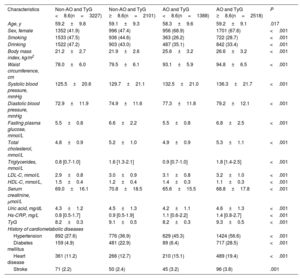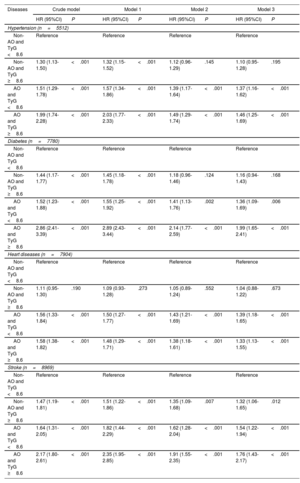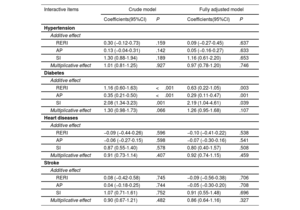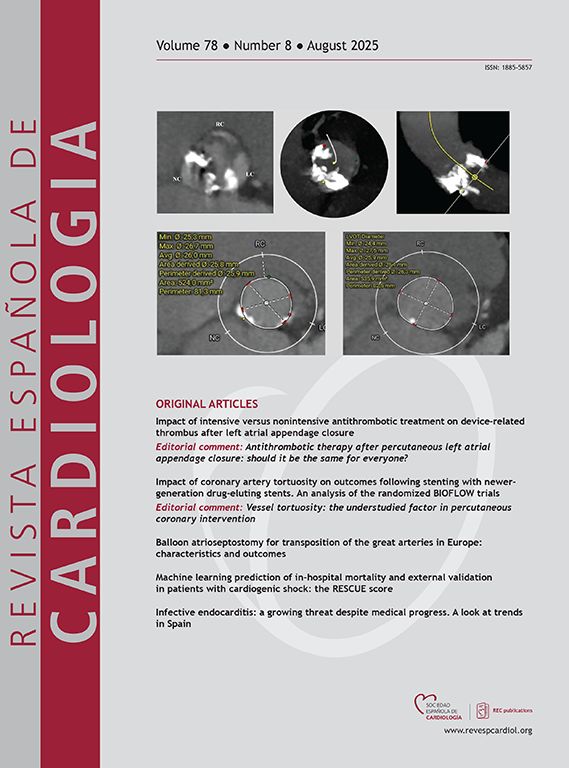
Both abdominal obesity (AO) and insulin resistance (IR) are predictors of cardiometabolic disease (CMD). We aimed to evaluate the temporal relationship between AO and IR and their combined effect on CMD risk.
MethodsA nationally representative cohort of 9234 participants was included, with a maximum follow-up of 9 years. The triglyceride-glucose (TyG) index was calculated as an indicator of IR, and AO was measured by waist circumference (WC). Cox regression was applied to evaluate the combined effect of AO and TyG on CMD risk, including hypertension, diabetes, heart disease, and stroke. A cross-lagged panel model was used to examine the temporal relationship. Multiplicative and additive interactions between AO and insulin resistance, as well as the mediating effect of TyG, were assessed.
ResultsIndividuals concurrently with AO and higher TyG (≥8.6 [median]) had the highest risk of hypertension (HR,1.46; 95%CI, 1.25-1.69), diabetes (HR, 1.99; 95%CI, 1.65-2.41), and stroke (HR, 1.76; 95%CI, 1.22-1.94). A biological interaction between AO and IR on diabetes was observed, with the attributable proportion due to interaction being 29%. There was a bidirectional temporal relationship between WC and TyG, and the effect of WC on TyG was more prominent than vice versa. High TyG had a mediating effect on the association of AO with hypertension (19%), diabetes (25%), and stroke (24%).
ConclusionsThe findings reveal a temporal relationship between AO and IR, their combined effect on hypertension, diabetes, and stroke, and the mediating role of IR. Strategies simultaneously targeting both factors should be emphasized for the primary prevention of CMD.
Keywords
Identify yourself
Not yet a subscriber to the journal?
Purchase access to the article
By purchasing the article, the PDF of the same can be downloaded
Price: 19,34 €
Phone for incidents
Monday to Friday from 9am to 6pm (GMT+1) except for the months of July and August, which will be from 9am to 3pm








